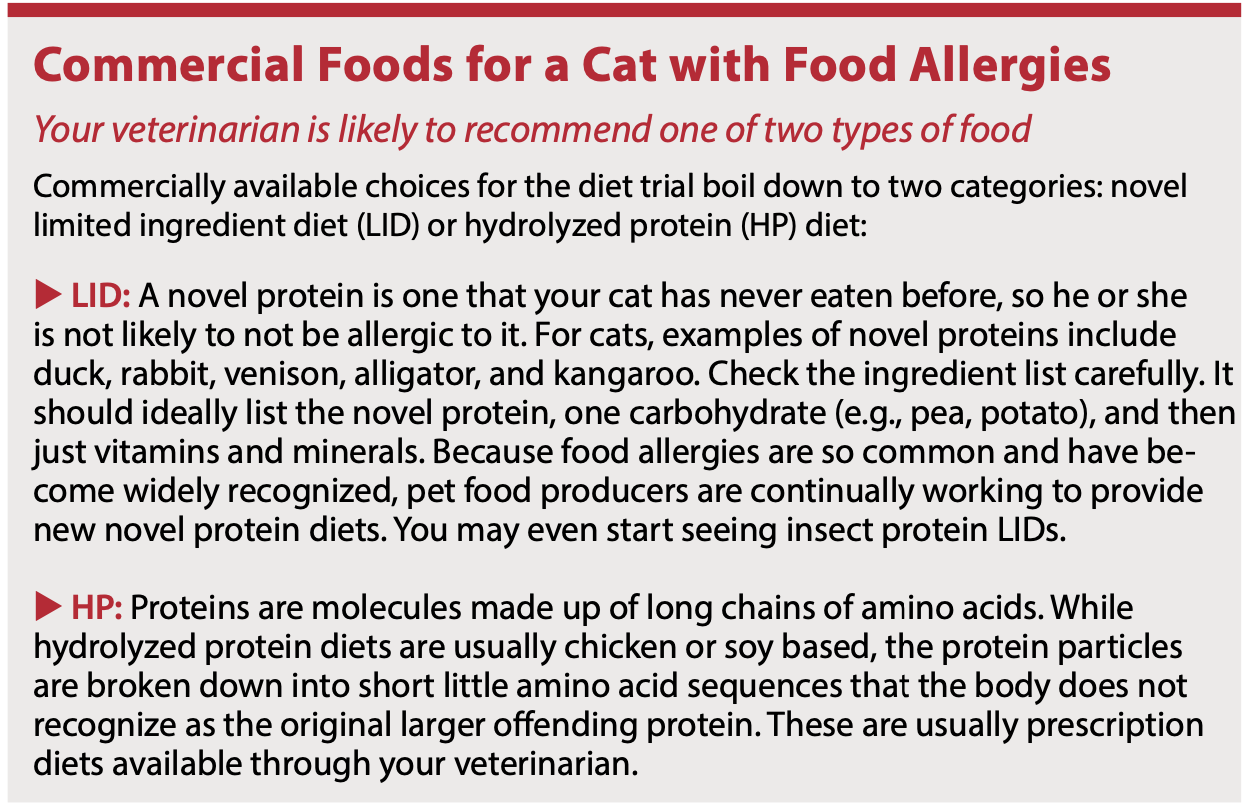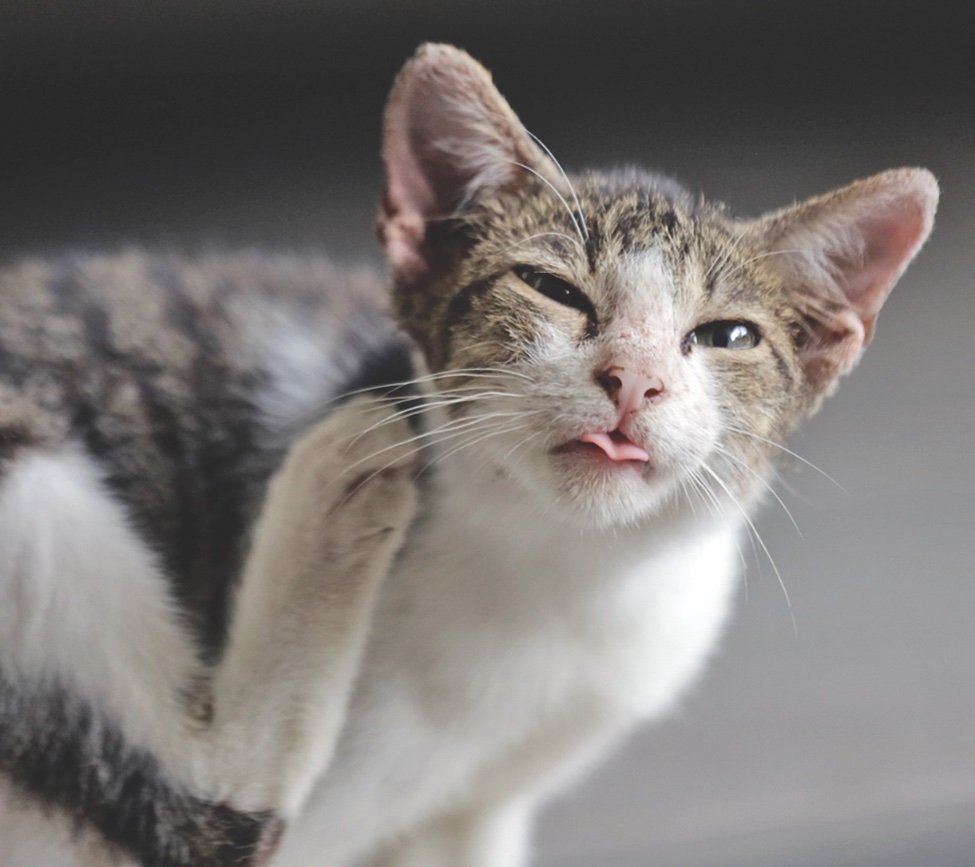If your cat is itchy all year-round, a food allergy is one of the most likely causes. Other allergens, typically inhaled, almost always cause seasonal itching, often only occurring in the spring or fall. Seasonality, or the lack thereof, is an important distinction to make as it helps your veterinarian make the best diagnostic and treatment recommendations for your allergic cat.
“Food-allergy dermatitis does not have a classic appearance per se,” says Dr. Mitzi Clark, dermatology section chief at Cornell University’s College of Veterinary Medicine. “The pruritus (itchiness) is non-seasonal, but the distribution of lesions in the cat can be anywhere on the body and quite similar to that of other allergic conditions, such as feline atopic skin syndrome due to environmental allergens (like hay fever in people). In the cat, there seems to be an association between head and neck pruritus and food allergies, though we can still see head and neck pruritus due to environmental allergies and ectoparasites.”
Diagnosing food allergy, beyond recognizing the classic presentation of normal healthy-looking skin that seems to itch non-seasonally, can be challenging. Blood tests and intradermal testing are often used to diagnose or rule out inhaled allergies. For a food allergy, however, owners are advised to undertake a diagnostic diet trial for a prolonged period. This can be difficult, especially in a multi-cat household with cats with varying nutritional needs.

“There are blood tests and intradermal testing for food allergens available in cats, but they are not reliable,” says Dr. Clark. “We need to do a novel (meaning new to the cat) home-cooked or novel or hydrolyzed prescription diet trial to diagnose a food allergy in a cat. Over-the-counter diets are not usually useful for diagnosis, because of the cross-contact issues with ingredients.”
Regardless of which type of hypoallergenic diet you choose, it is important that your cat eat nothing else during the trial period, which can be as long as two to three months. This is a long time, and it can be challenging, especially in multi-cat households in which cats require different diets.
“You’ll see that dermatologists vary on the length of time they recommend for diet trials,” says Dr. Clark. “The literature suggests that you need at least four to six weeks on a diet trial to see a significant reduction in itch, and that the reduction in itch may continue to improve over time, so some diet trials are continued much longer than this.”
Why so long? “Because food allergy in the cat is complicated, with numerous cytokines and inflammatory mediators involved. Many dermatologists will continue diet trials for at least 12 weeks for cats,” says Dr. Clark.
It is so important that your cat eats nothing else during the diet trial that even flavored monthly oral parasite preventatives are a big no-no. “I recommend topical preventatives during a diet trial,” says Dr. Clark.
Admittedly, none of this is easy. But here’s the bottom line: If your cat has non-seasonal itching, it is highly likely he or she is food allergic. While orchestrating a pure, 100% compliant diet trial for the recommended period can be challenging, the reward is priceless. Eliminating the food ingredient(s) your cat is allergic to may result in resolution of that nasty itch without the need for medication. And who likes medicating cats?




